In the late 1980s a highway expansion program had slated for destruction the wooden theater in the Kochi Prefecture mountain town of Yusuhara. The theater, known as Yusuhara-za, wasn’t particularly old. It had been built in 1948. But it was a lovely building, done in a traditional pre-war style, and it had quickly become a community entertainment center, hosting not only kabuki and other live performances, but also serving as a movie theater. Alas, it was in the way of plans for a new roadway.
A community group that believed the theater worth preserving set to work to save the structure by finding it a new home and arranging for its removal. To gain traction (and funding), the group appealed for support to architects across the nation. One of those who travelled to Yusuhara to see the theater and ultimately lend his support, was Kengo Kuma, an up-and-coming architect then only a decade into his now-prolific career. One could say Yusuhara changed his life; certainly it had a massive impact on Yusuhara, giving the already historic town an additional dimension.
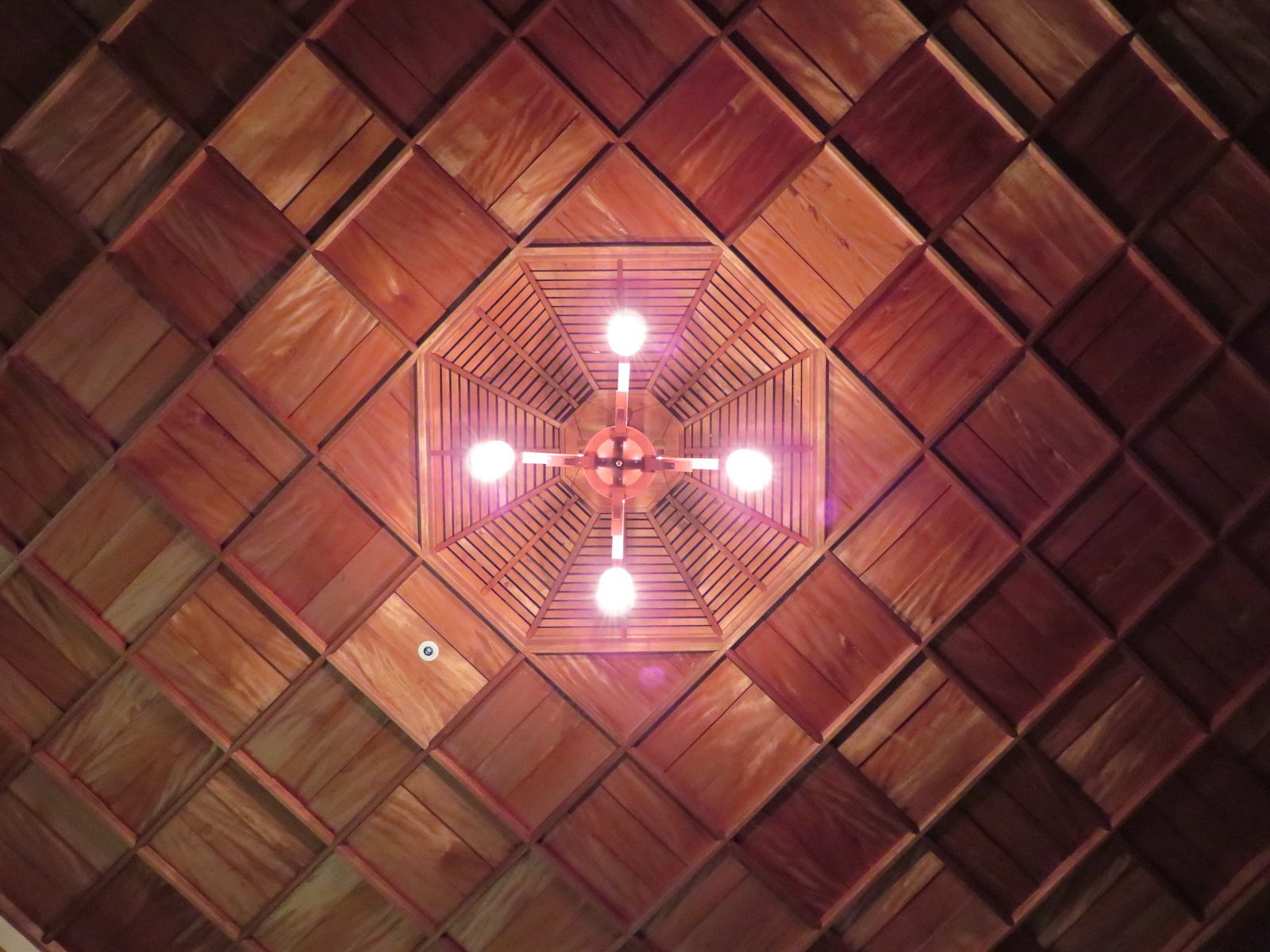
As the vintage theater was being moved and reconstructed to become the only such wooden theater in Kochi Prefecture, the town fathers had another idea for revitalization, a hotel and hot spring complex they wanted to call Kumonoue Hotel. Kumonoue means “above the clouds”, an apt description of Yusuhara as a mountain enclave. They invited Kuma to design it for them.
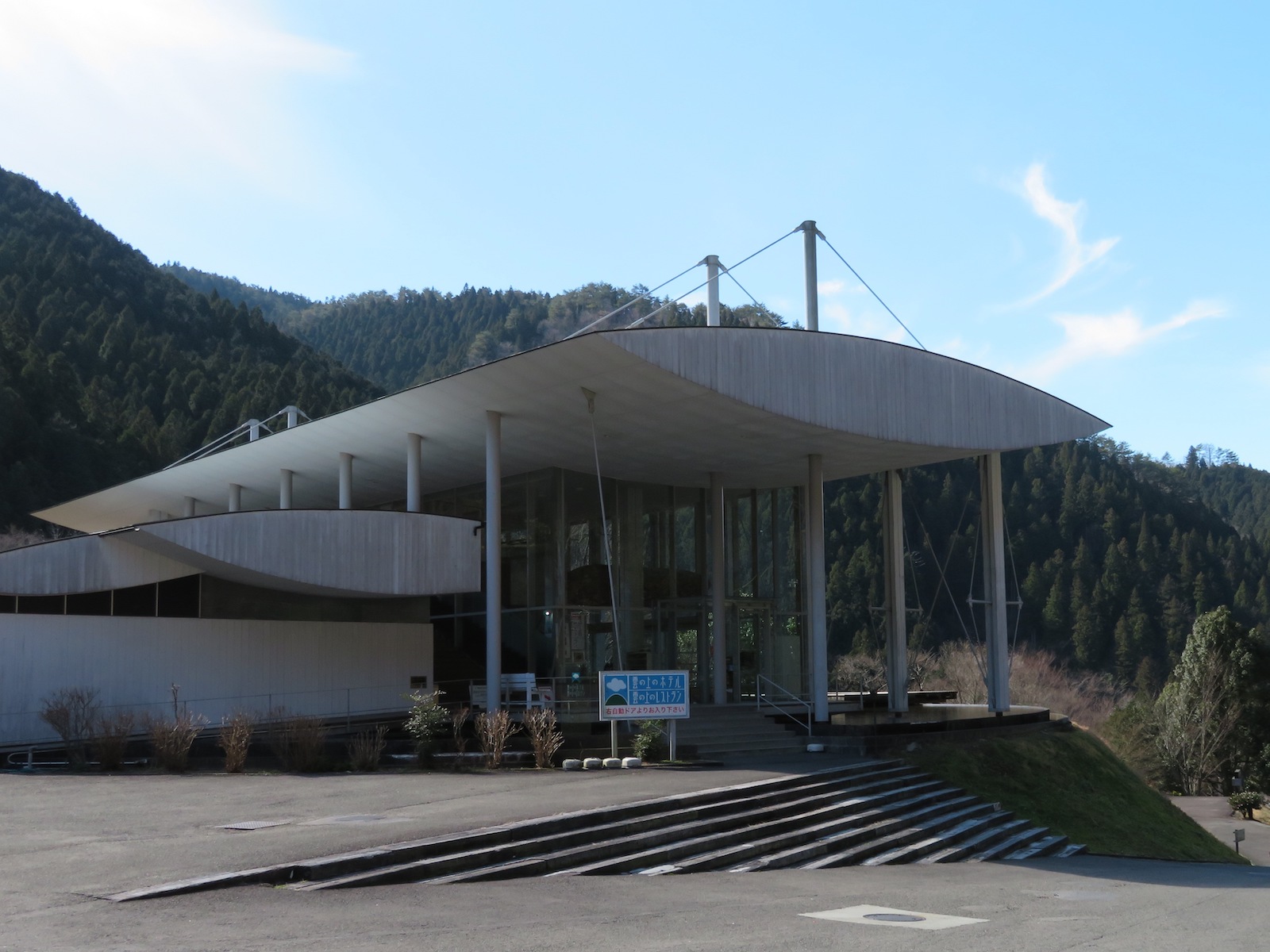
This was a time when Japanese architectural design was focussed on glass and steel. Kuma’s design for the hotel “above the clouds” combined that glass and steel with the predominant local building material of cedar, which he had come to admire thanks to his involvement with Yusuhara-za, which was replete with examples of cedar as both structural and decorative building material. Some say the roof Kuma designed for the new hotel emulates airplane wings, because airplanes often fly above the clouds. Others say the design is intended to represent clouds themselves. Either image suits this hotel nestled in a deep valley a couple of kilometers above the town center.
Completed in 1994, the public areas of the hotel are dominated by glass walls that integrate the indoors and the outdoors, with a reflecting pond immediately outside the glass, as well as lots of wooden decking. Inside, Yusuhara’s cedar is used for the support beams as well as the beautiful flooring. The synthesis is impeccable.
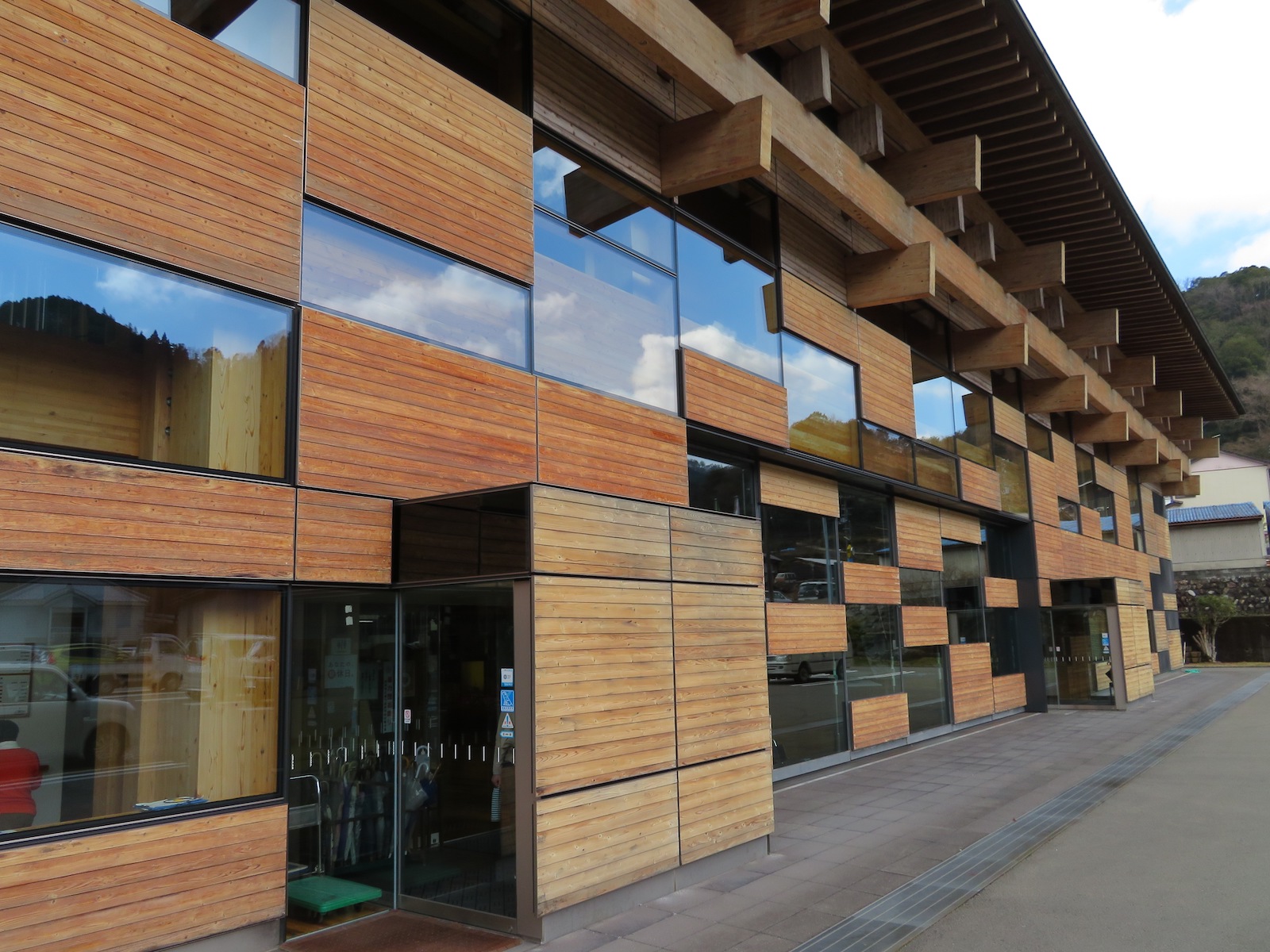
A decade later when Yusuhara needed a new government administration building, Kuma’s talents were once more called upon. He produced an inviting building that again featured Yusuhara’s singular cedar wood, with an expansive lobby that can only be characterized as welcoming, a far cry from the intimidation one often feels when visiting a bureaucratic center.
The government building, completed in 2006, is located between the old main street and the new road through town, near banking facilities, the town’s history museum, tourist information center and the reconstructed Yusuhara-za theater, perhaps helping it to feel integrated into the life of the townspeople. It also integrated Kuma into the life of the town.
The collaboration continued when Kuma designed two more buildings that were both finished in 2010: Machi-no-Eki Yusuhara (also known as Marche Yusuhara), a centrally-located local marketplace and hostelry, and the Wooden Bridge Museum.
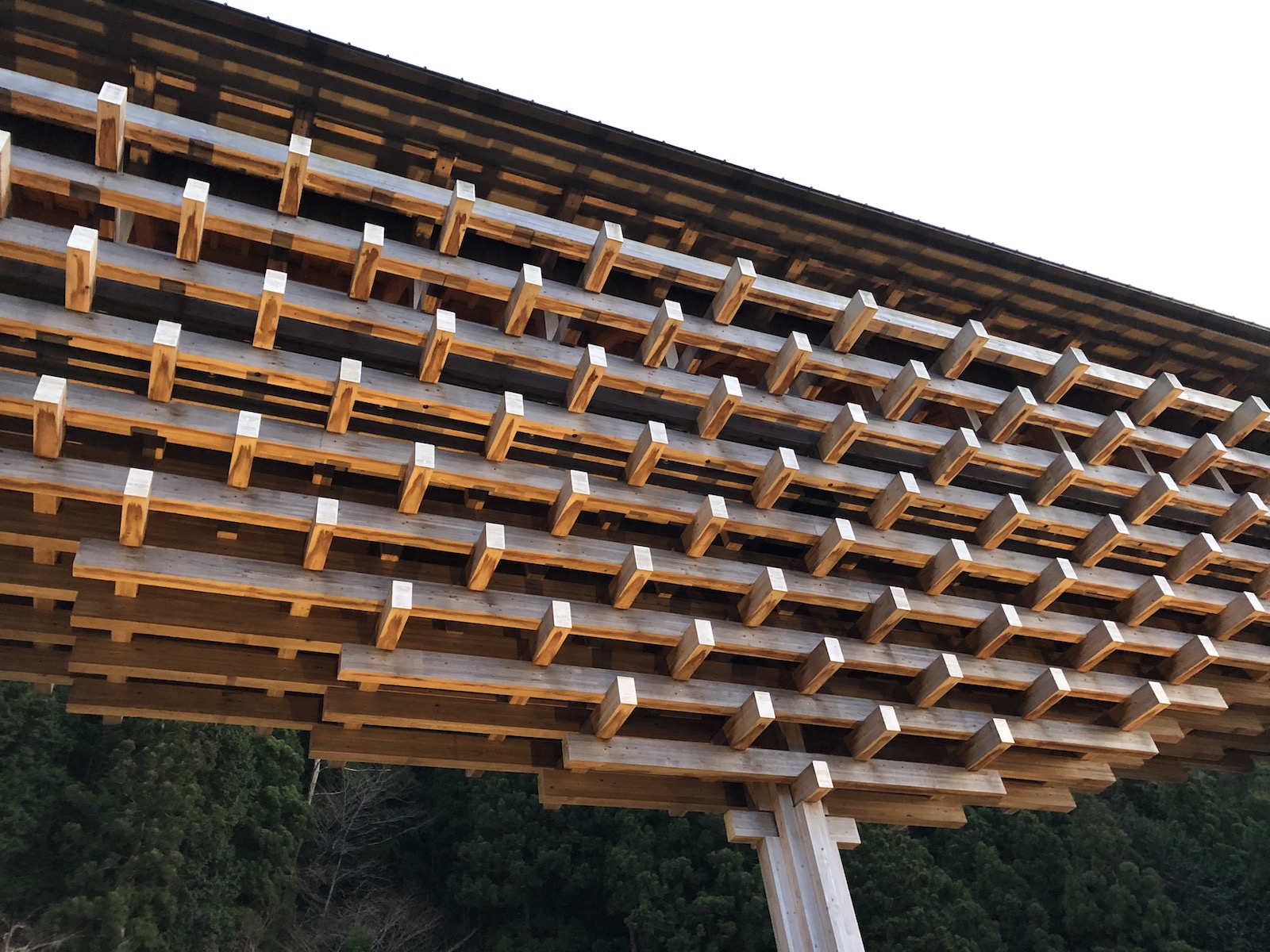
The latter is not a museum about wooden bridges, but a gallery located in a structure that looks like a covered wooden bridge. Also known as the Gallery Above the Clouds, it is an homage to Yusuhara’s lovely cedar wood as well as to the traditional engineering of Japanese wooden supporting eaves known as tokyou. Tokyou, a structure of nested blocks and brackets that resemble an inverted pyramid, is commonly seen supporting the heavy roofs of wooden temples and other similar large wooden buildings of old, but is shown off to fine advantage here. Kuma used a similar structure in his interior design of the lobby of Tokyo’s recently rebuilt Capitol Tokyu Hotel.

The gallery is adjacent to the original Kumonoue Hotel and contains exhibits on the architecture of all the Kuma-designed buildings in Yusuhara (read on; there are more). It also serves as a bridge between the hotel and the onsen baths located just down the valley. A symphony of cedar, the gallery can be enjoyed in daylight or darkness, from the inside looking out or from the outside looking in.
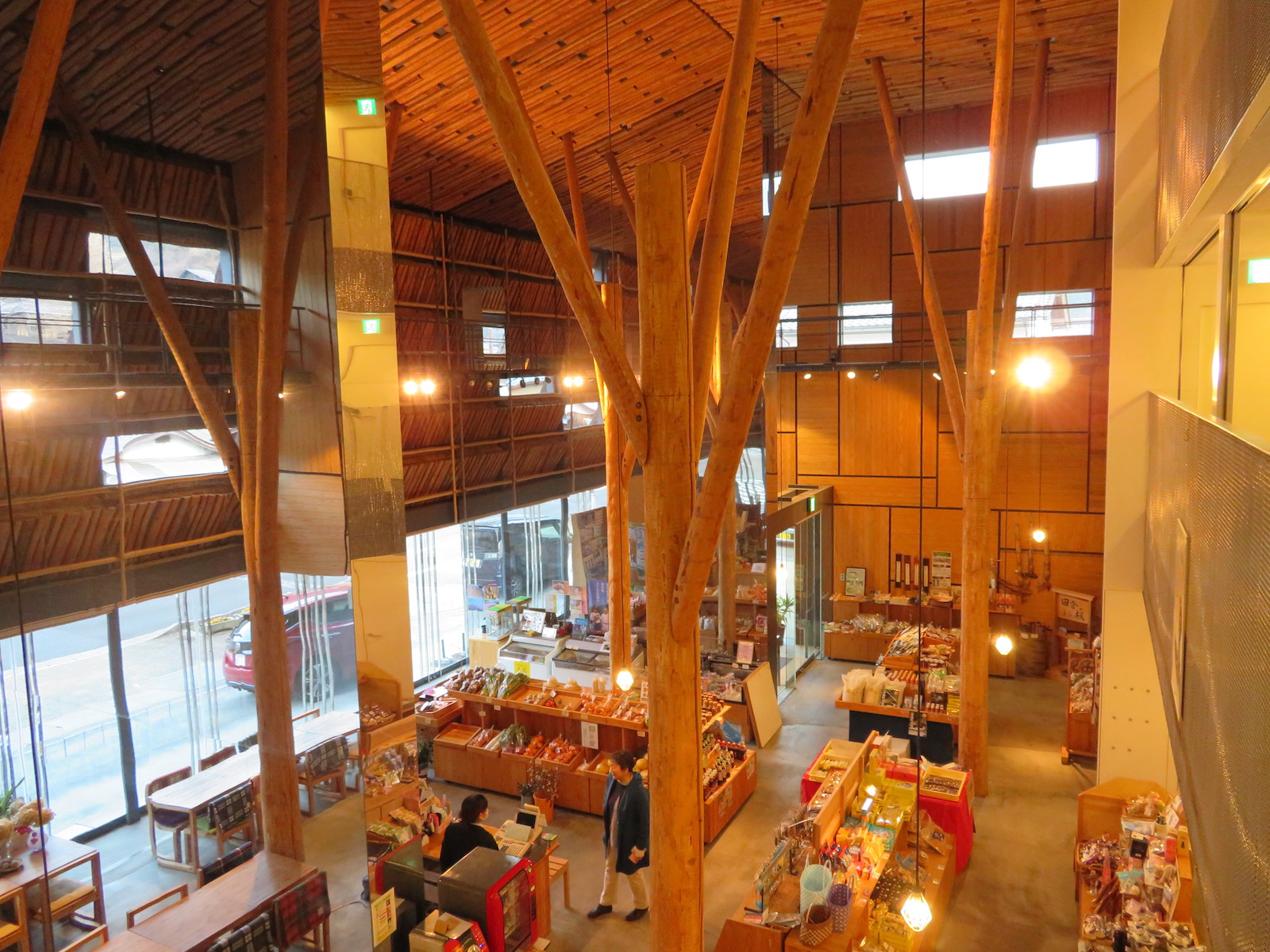
Marche Yusuhara also employs the traditional building materials of Yusuhara, but takes a somewhat different approach. The internal support beams resemble trees, with their branches at the top reaching out to hold up the ceiling above the marketplace of locally made products. This design might be seen as a simple version of the pillars Gaudi used for Barcelona’s famed Sagrada Familia cathedral, except that it is equally a natural and obvious design for pillars in a heavily forested place like Yusuhara. The front wall of the building borrows from the concept of local thatched roofs to create a distinctive look that provides natural insulation and is simultaneously environmentally friendly. In keeping with its natural, eco-friendly theme, the entire building -- the back half of which contains three stories of spacious accommodation -- is powered by its rooftop solar panels.
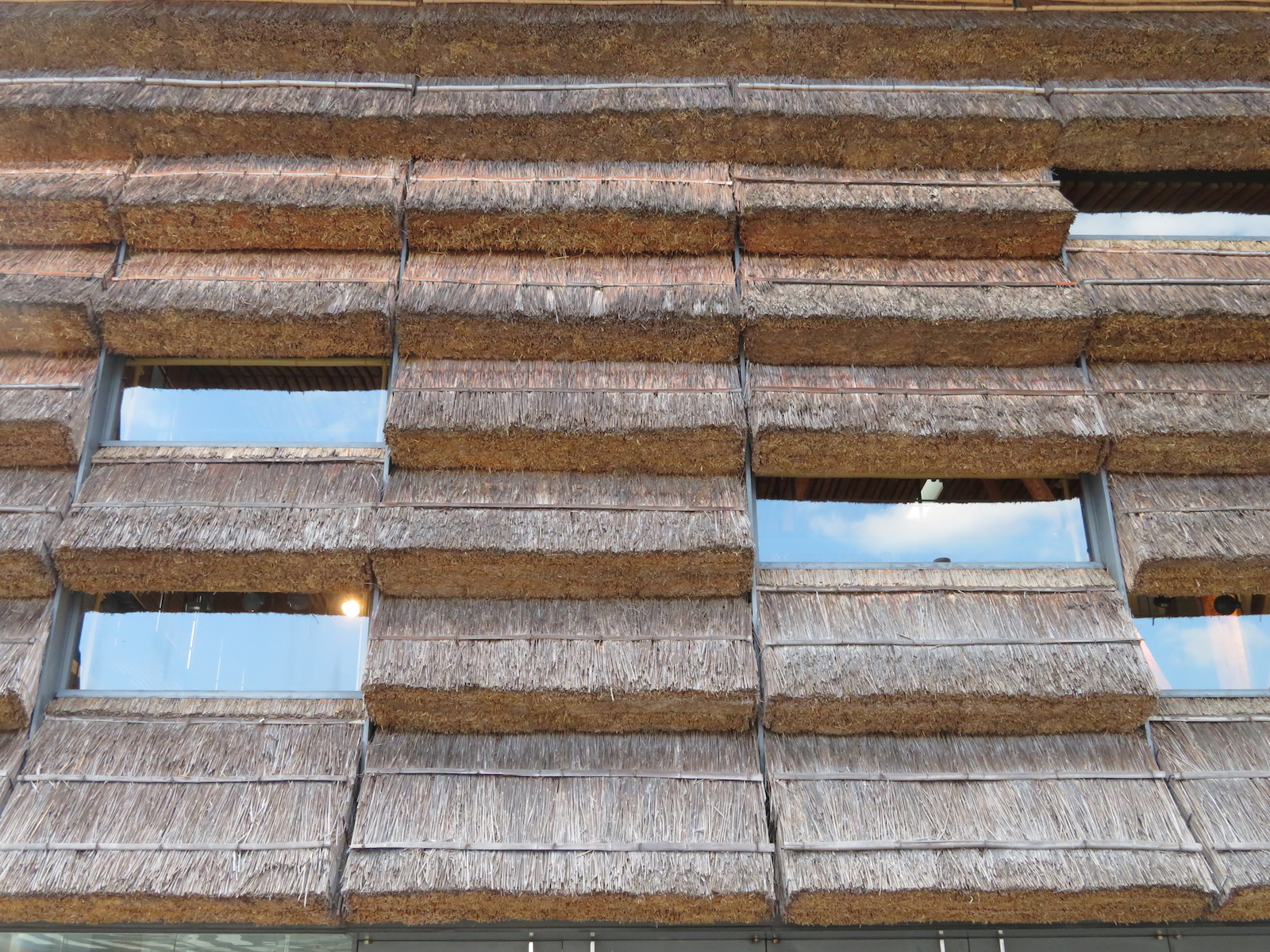
The culmination of all these various designs can be seen in Kuma’s latest (one dare not say last) Yusuhara project: the library above the clouds (Kumonoue Toshokan) and Yururi, an “integrated welfare facility.” The two buildings stand side by side and appear almost as a single structure, covered with the same cedar planks with black accents.

The library is on three levels, seemingly rising to the sky. Similar to Marche Yusuhara, the supporting beams branch out toward the ceiling like trees, but in a more complex structure of joinery that, not unlike stone arches, become stronger based on the weight they are holding up. Again, the tree-like shape is perfectly natural for Yusuhara, but it also serves as a metaphor for the tree-of-knowledge that all libraries are, not to mention the notion that the paper for books comes from trees.
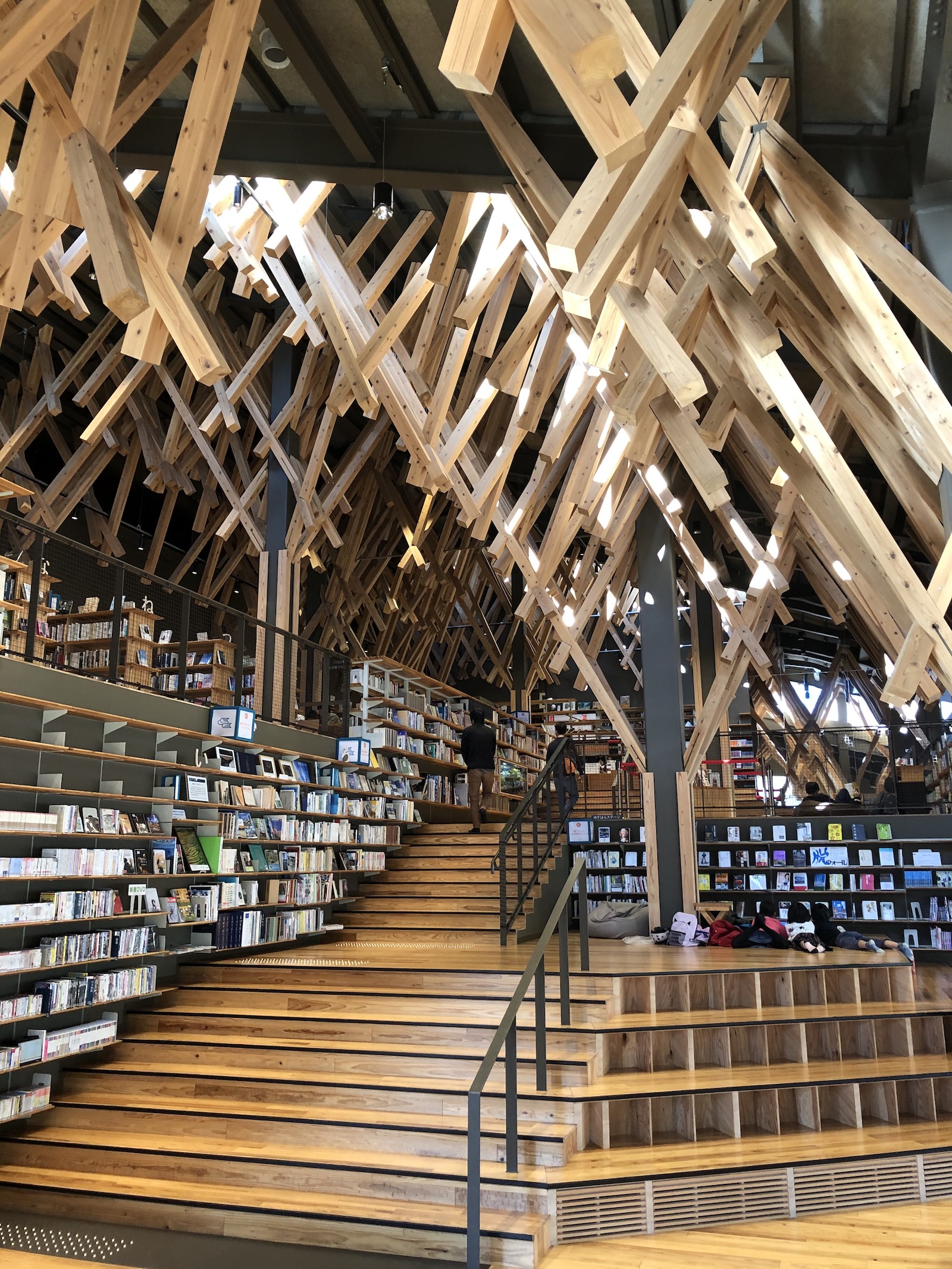
The natural look of the wood used throughout the library is so inviting that one simply wants to linger and soak up all those wonderful, energizing negative ions that trees are known to emit. Everyone who visits seems to feel that way, as the library has become a popular community center. Outside of school hours, children sprawl on the floor, on bean bags, on chairs, wherever they find a comfy spot to sit and enjoy a book or a video. Adults, too, can be seen browsing, reading, and researching. In summer, the glass panels of the ground floor outer walls are opened to enhance the feeling of being outdoors while actually being inside.
In one corner of the ground floor is a small coffee shop where local farmers might gather to exchange gossip or a local ladies group holds a meeting. The coffee and cheesecake special is pretty good, too.

In the opposite corner of the ground floor, tucked behind the library’s reference desk, is a bouldering wall, where children and their parents can have a go at this latest sports fad. Climbing shoes are available to borrow and an instructor is often on hand to help out.
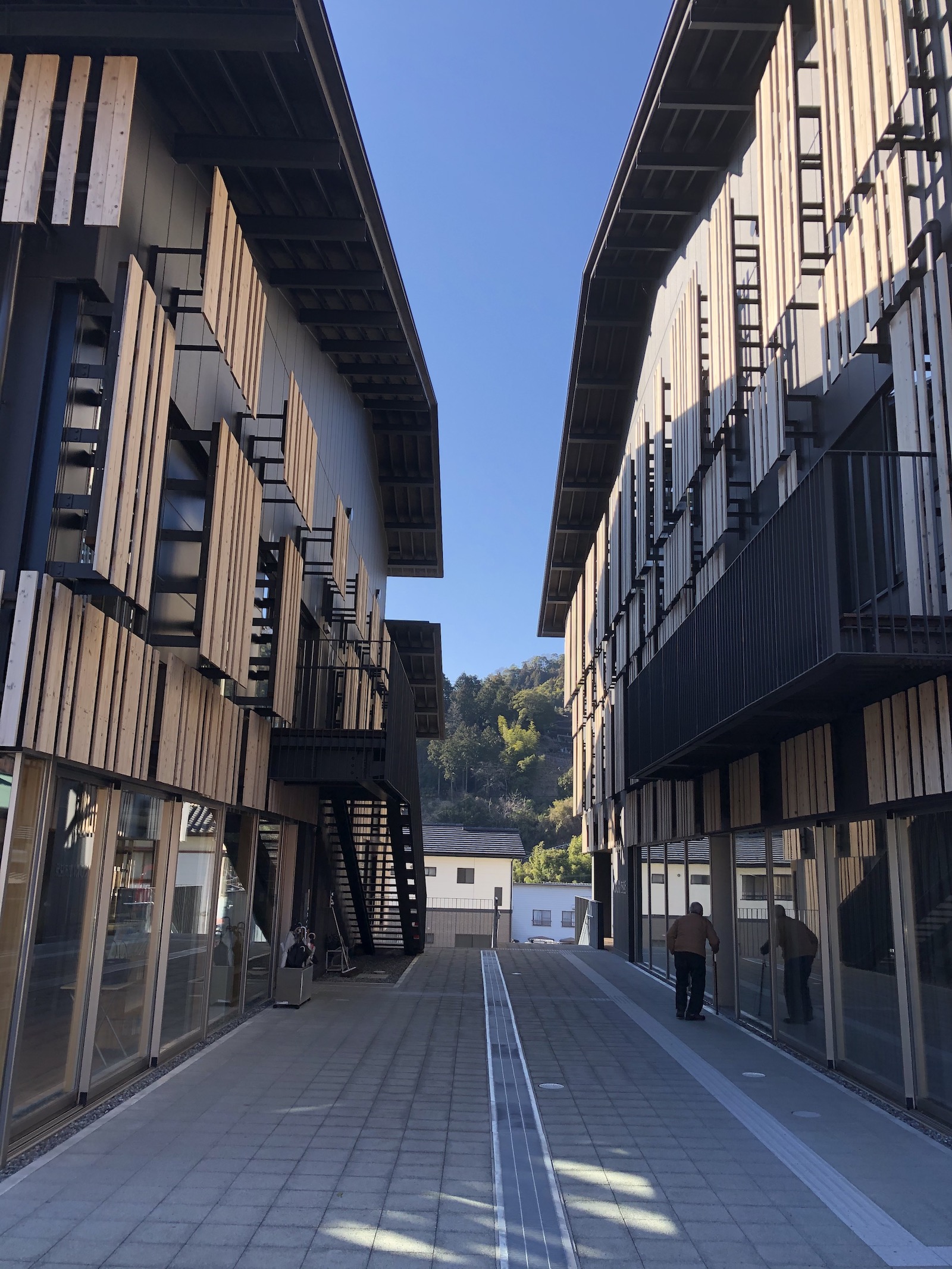
Yuriri, next door to the library, is a facility designed predominately for elderly townspeople, although many of its features are open to everyone. The facility provides housing and lifestyle support to people no longer able to live on their own, as well as to other locals who simply need some companionship during the day. A roomful of massage chairs and similar devices to promote health and well-being look particularly enticing. Here, too, clean lines, cedar flooring and washi paper accents, create a general feel-good atmosphere.
While Yusuhara could be considered a somewhat remote destination, many tourists are happy to make the trip for the opportunity to savor these Kuma creations that blend so easily with the natural, forested mountains that surround the town, true masterpieces sponsored by a community that is simultaneously traditional and forward-thinking.
Vicki L Beyer, a regular Japan Today contributor, is a freelance travel writer who also blogs about experiencing Japan. Follow her blog at jigsaw-japan.com.
© Japan Today Take our user survey and make your voice heard.
Take our user survey and make your voice heard.















4 Comments
Login to comment
Kenichi Mitomi
Innit the night sky beautiful in Japan?
Kenichi Mitomi
Kind of place I want to send myself when I'm older.
Thank you JT for super news
Speed
I lived close to Yusuhara in the 90s and remember these beautiful wooden buildings being built.
In Kuma-town (which is coincidentally the name of the architect in this article) which is just across the border in Ehime, when they rebuilt their library, also made it completely out of cedar. Same for a nearby village office.
The local forestry in that area was wiped out by the 70s and they've made a conscious effort to use the wonderful smelling and expensive cedar wood for a lot of their architecture. They're awesome.
I was stoked to see this article. Thanks.